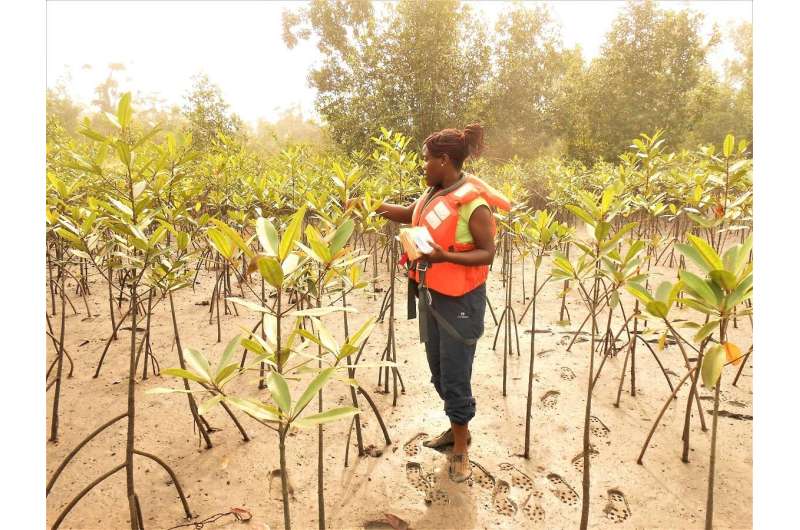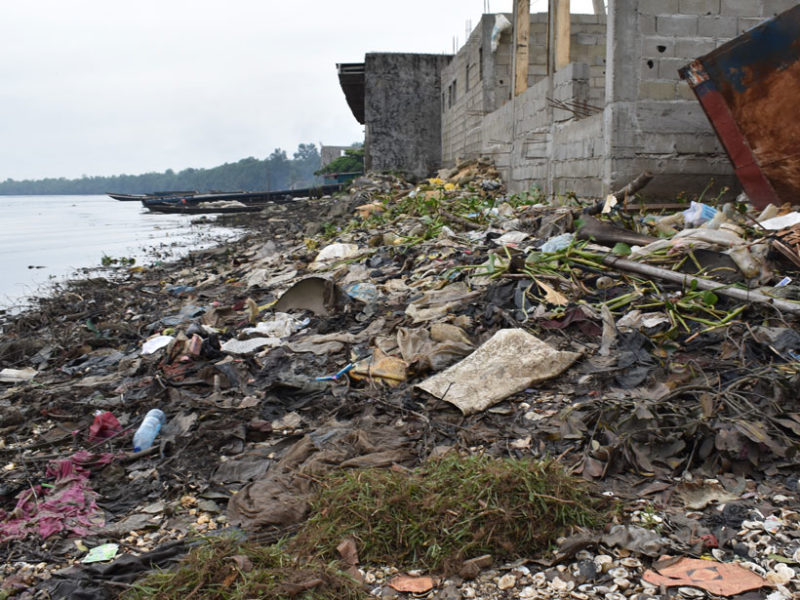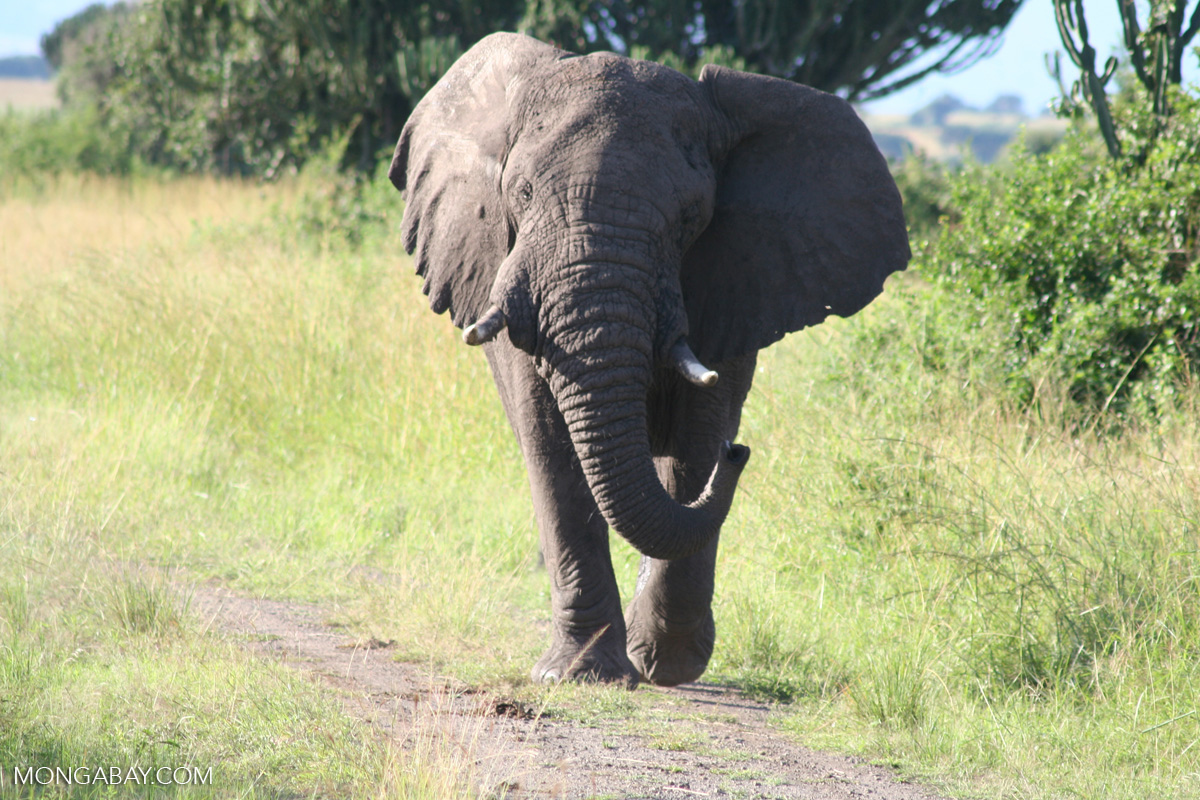Children’s Mangrove Calendar Art Contest OPEN

USA – Mangrove Action Project (MAP) would like to invite children from your country to join in this creative and educational art competition. It is an opportunity for the younger generation to learn about the vital role Mangroves play in the lives of coastal communities and marine life around the world while letting them explore their imagination and have fun when creating their art pieces. This year’s competition will be our 20th annual art contest, and is a wonderful way for participating NGOs to build relationships with teachers and to develop children’s understanding when thinking about the environment around them. Education about the importance of Mangrove and Coastal ecosystems is critical when affecting long-term change; they are the next generation of decision makers and we have the chance to teach them the value of the natural world, giving them a life-long appreciation and respect for their environment. As always, the selected winning artworks will be published in next year’s calendar (2022), which will help to raise awareness of mangrove forests whilst encouraging and listening to the imaginative voices of the next generation. All students will be eligible to receive a printable e-certificate of participation. Winners, including their participating NGOs and schools, will receive copies of the final calendar, and the winning students will receive a signed official certificate showing their great achievement in this year’s Children’s Mangrove Art Contest. As well the art will be exhibited in MAP’s virtual gallery. READ MORE GLOBAL Humanity’s greatest ally against climate change is Earth itself

GLOBAL – Humans have put our planet on a path toward disaster. If people keep polluting at the current rate, scientists say, climate change will cause prolonged droughts, devastating storms, collapsing ecosystems and vanishing species. Coastal cities will be deluged by sea level rise; widespread food and water shortages will lead to the deaths of millions. To avoid this fate, civilization must rapidly transform — cutting carbon emissions 40 percent by 2030 and reaching “net zero” by the middle of the century. Earth itself is our greatest ally in this effort. Ecosystems like California’s kelp forests absorb about half of the greenhouse gases humans emit, studies show. Without them, warming would be even worse. Nature shields us from the worst consequences of our own actions, forgiving the sins we refuse to repent. But it cannot endure endless abuse. READ MORE UMD studies mangrove genetic diversity in Africa to conserve centers of biodiversity

GLOBAL – In collaboration with researchers at the Vrije Universiteit Brussel, a University of Maryland (UMD) postdoctoral researcher recently co-published a large-scale study examining the genetic diversity of mangroves over more than 1,800 miles of coastline in the Western Indian Ocean, including Eastern Africa and several islands. While the mangroves of Asia, Australia, and the Americas have been more extensively studied, little work has been done classifying and highlighting genetic diversity in African mangrove populations for conservation. Similar to other wetlands, mangrove trees like the species studied in the new paper in Scientific Reports (Rhizophora mucronata) create habitats for myriad animal and plant life, acting as hubs of biodiversity while also economically supporting many local communities. This work showcases how oceanic currents create both connectivity and barriers between mangrove populations, with important implications for how to protect these ecosystems. “Whenever I get asked about mangroves, I always say they are my happy place,” says Magdalene Ngeve, postdoctoral researcher at UMD in Maile Neel’s lab (professor in the Department of Plant Science and Landscape Architecture and Department of Entomology). “They are very fascinating systems to work with. When I went to do my field work for my Master’s thesis and got to experience mangroves, be close to the trees, and see how much biodiversity they host, I instantly fell in love and knew this is what I should be studying.” READ MORE AFRICA Cameroon’s Mangrove Forests Are Choking on Plastics

CAMEROON – Rapid urbanization and insufficient waste management are threatening the environmentally and culturally vital Wouri Estuary. Solutions are needed to save these and other mangroves around the world. Large amounts of plastic—bottles, cups, bags, plates, and other debris of various shapes and colors—washed up on the nearby boat ramp as we sat down to breakfast at a waterfront restaurant on our first morning in Youpwe, a neighborhood on the Wouri Estuary in Douala, Cameroon. Later that day, we ventured out to explore the nearby shore of the tidal Doctor Creek. We found still more plastic litter—floating on the water, trapped in sediments exposed by the ebbing tide, and caught in the foliage and roots of the otherwise-lush mangrove forest through which the creek flows. Although the pervasive litter shouldn’t have surprised us, it was shocking nonetheless and offered a stark reminder of the global tragedy of plastic pollution. READ MORE Total’s East African oil pipeline to go ahead despite stiff opposition

UGANDA – The Ugandan and Tanzanian governments have signed agreements with French oil major Total and China National Offshore Oil Corporation (CNOOC) to build a 1,400-kilometer (900-mile) pipeline from Uganda’s Murchison Falls National Park to the Tanzanian port of Tanga on the Indian Ocean. The pipeline’s critics say 2,000 square kilometers (770 square miles) of protected areas will be impacted and 12,000 families displaced from their land. If completed, the $3.5 billion pipeline will transport heavy crude from more than 130 wells inside Uganda’s largest national park, which is home to threatened African elephants and lions, a formidable population of Nile crocodiles, and more than 400 bird species. Conservationists say it won’t just threaten wildlife but that it flies in the face of efforts to curb global warming by locking in investment in a dirty fuel. “We have been working in the oil-rich subregion of Uganda. It’s not a desert, like many oil mining spaces, but rather a high biodiversity area,” Atuheire Brian at the African Initiative on Food Security & Environment (AIFE) told Mongabay in an email. READ MORE How mangrove forests helped stall environmental crime

KENYA – The majestic mangrove forests of Kenya’s east coast have helped to bring levels of poaching and logging down, while taking large quantities of carbon out of the air. To a visitor travelling south from Mombasa to savour the rich culture of the Swahili, the village of Gazi passes for a sleepy settlement in an almost forgotten stretch of the rapidly developing Kenyan coast. Inside the closely built mud-walled houses of the village, the day begins with a prayer call from the village mosque before dawn. Soon, early risers return from the shoreline with fish stocks that will supply Gazi’s traders for the day. Later on in the day, women bake flatbreads on roadside hearths to sell to visiting fishermen from as far as Tanzania, while male elders play draft, a local social pastime, on shaded patios. Life was not always so peaceful in Gazi – eight years or so ago, things looked very different. The harvesting of mangroves for firewood and construction poles had depleted the local forests. READ MORE Libreville has lost 70 hectares of mangroves in three years

GABON – The disappearance of Gabon’s mangroves is accelerating despite alerts from environmental organisations and rules set by the government. The capital Libreville lost nearly 70 hectares (ha) of its mangroves between 2017-2020. This loss is mainly attributed to human activities, particularly real estate projects. Several non-governmental organisations (NGOs) are sounding the alarm on the destruction and degradation of mangroves in Gabon. The latest figures show a loss of 69.9 hectares (ha) of mangrove located in three districts of Libreville, the Gabonese capital. These are the first district with 37.23 ha, the fifth district with 21 ha, and the sixth district with 8.67 ha. “What is in danger through the destruction of mangroves in the Idolo area (north of Libreville, editor’s note) is our environment. These mangroves serve as a water watch for these marine storms and in relation to climate change, they play a role of biofilter,” explains Paul Kopedina Itanguino, president of the NGO Actions citoyennes pour le développement local (ACDL). READ MORE ASIA Political instability puts Myanmar’s biggest mangrove forest at risk

MYANMAR – Wun Paik mangrove forest, the biggest of its kind in Myanmar, has seen increased logging since the military coup in February, according to Ramree Township residents. Illegal logging was not uncommon in the Wun Paik reserve prior to the military takeover, but only took place in remote corners of the forest, with loggers using the sea and inland waterways to take away timber harvested illegally. But after the coup, even trees near the Yangon-Kyaukphyu road were cut down and taken away in motor vehicles, said Ramree resident U Kyaw Kyaw Naing. “Those trees were gone with the political instability. I have seen trees being cut down in broad daylight,” said U Kyaw Kyaw Naing.
READ MORE Mapping future hotspots of carbon dioxide emissions from mangrove loss

INDIA – Six mangrove-rich regions, including the Bay of Bengal in south Asia, are identified as future hotspots of carbon dioxide emissions from mangrove loss due to various factors, according to a new study. Emissions from the loss of these ‘carbon superstores’ could reach 2391 Teragram carbon dioxide (CO2) equivalent by the end of the century, or 3392 Tg CO2 eq when considering foregone soil carbon sequestration — a missed opportunity to capture (sequester) more carbon in losing the mangroves, according to the study. The team led by Australia’s Griffith University compiled global data sets to project baseline global carbon emissions from different drivers of mangrove loss. They focused on the five key drivers of carbon emissions from mangrove loss: clearing of the coast; urbanisation; aquaculture and agriculture; erosion; and extreme climatic events. READ MORE Mangrove deforestation continues unabated in Kannur

INDIA – Deforestation of mangroves is continuing unabated in Kannur district. Kannur is blessed with large tracts of mangrove forests spread over government and private lands. However, large-scale felling of mangroves was recently noticed in private lands at Pattuvam, Ezhome, Cherukkunu, and Kandakali in Payyanur. The land is now being used for Kaipad and shrimp farming. All mangrove regions come under the Coastal Regulatory Zone (CRZ) and are legally protected by the CRZ Act, said N. Ramith, a Wildlife Trust of India member who is in charge of the Kannur Kandal project, which creates awareness about the need for protecting mangroves. However, there has been massive destruction of mangroves for Kaipad paddy cultivation and shrimp farming in the district, he said. Mr. Ramith observed that while violations were reported in CRZ zones, the almost continuous destruction of mangroves largely goes unreported to the Kerala Coastal Zone Management Authority (KCZMA). The State has 650 sq.km of inter-tidal region, and shrimp farming is taken up in around 100 sq.km. “The subsidised scheme implemented by the government for promoting shrimp farming and Kaipad paddy is a threat to mangroves,” he said. READ MORE AMERICAS Rangers appeal to PACT to save threatened mangroves

CAYMAN ISLANDS – An adjourned application for a subdivision that threatens the Central Mangrove Wetlands is one of a number of controversial items on the Central Planning Authority’s agenda this week that activists hope the PACT government will be able to pause, in light of the commitment made by the new premier and his team to protect the environment and in particular critical habitat such as mangroves. The Cayman Islands Mangroves Rangers wrote to Premier Wayne Panton, drawing his attention to the existential threat being posed to the Central Mangrove Wetlands by the application expected to be heard Wednesday and a number of pending projects threatening the South Sound mangroves. The application by Lookout Holdings Ltd for a massive subdivision of more than 435 home lots, which was adjourned in March to allow the applicant, the agencies and objectors to return and discuss the application in more detail, poses a number of major issues, but the threat to the wetlands is of particular concern. Meanwhile, the Rangers have been increasing their activism in recent months as the threat to local mangroves from development grows, despite the adoption of a species protection plan. READ MORE LAST WORD Hello , we would like to announce the new dates for our Communities, Climate, and Coastal Ecosystems Showcase Event. June 15 & 16, 2021 – 10:00 – 13:00 EDT Add the Showcase event to your calendar Through partners worldwide, the UNEP / GEF Blue Forests Project (2015-2021) has explored and tested blue forests methodologies and approaches to harness ecosystem services and support carbon financing initiatives, while addressing key knowledge gaps and international policy engagement. The project results incorporate tools and solutions for the greater global application of blue carbon assessment and accounting, payment for ecosystem services, and enhancing capacity for a sustainable blue economy. BlueCarbonProject
Teaterplassen 3
Arendal, 09 4844
Norway Like this newsletter?
Pease consider donating to MAP to keep it going.
Giving could never be easier  | URGENT ACTION Stop construction work on a private port In Defense of the Quilombo Boca Do Rio TAKE ACTION! Tell Sumitomo to stop building polluting coal power in Bangladesh! TAKE ACTION! Stop Adaro, Indonesia’s coal giant, from refinance its debt.
TAKE ACTION Buy a Pin – Support MAP
 CHILDREN’S ART CALENDAR CONTEST Contest OPEN

ACTION ALERTS Lawsuit Against Genetically Engineered Tree Solidarity Group – SIGN PETITION Tell the Japan International Cooperation Agency not to fund polluting coal – TAKE ACTION Please SIGN: keep plantations out of orangutan habitat!
TAKE ACTIONUnilever: stop destroying mangroves for convenience food! SIGN OUR PETITION
Stop plundering the oceans for industrial aquaculture! SIGN THE PETITION
Like this newsletter? Pease consider donating to MAP to keep it going. Giving could never be easier
Please see our newest video: “Restoring The Natural Mangrove Forest”
WATCH VIDEO 
Restoring The Natural Mangrove Forest
Watch movie 
Community Based Ecological Mangrove Restoration in Rufiji Delta VIEW VIDEO Video: Mangroves for the Future – A look bacK. As the latest phase of Mangroves for the Future (MFF) draws to a close, this video highlights some of the project’s most successful initiatives – from local women supporting national park management in Viet Nam to an island in the Maldives that has become a model for waste management, and everything in between. View Here WANT TO GET INVOLVED?
Follow and Join MAP!    
Like this newsletter? Pease consider donating to MAP to keep it going. Giving could never be easier 

Singing for the Sundarbans WATCH HERE Entrevista con Monica Quarto del Mangrove Action Project (Spanish language) Oye Aqui
VOLUNTEER OPPORTUNITY 
MANGROVE ISSUES Want to learn more about mangroves?
Our short presentation will give you a better understanding of the issues we are working to solve. WATCH PRESENTATION What is CBEMR? Download MAP’s 2 page CBEMR Information Sheet containing links to all MAP’s CBEMR resources – CLICK HERE
View MAP’s uploaded Videos at
MAP Video Gallery Question Your Shrimp Consumer/Markets Campaign!
WATCH VIDEO Mangroves: Guidebook to Malaysia – Click Here SHARE MAP’S VISION
CLICK HERE to watch short introductory video. Together we can work “at the roots of the sea”. Our short documentary, Reducing the Risk of Disaster through Nature-Based Solutions : Mangroves

Marvellous Mangroves Curriculum The Marvellous Mangroves Curriculum begins with a simple philosophy – getting future generations to not only learn about, but understand the importance of mangrove forests. VISIT 
The award-winning Marvellous Mangroves (MM) curriculum educates children on the importance of mangroves and their ecological functions, teaching them about modern challenges and mechanisms for sustainability. VIEW VIDEO Marvellous Mangroves Curriculum in Bangladesh – WATCH VIDEO
MARVELLOUS MANGROVES IN BRAZIL
En Portuges 
Marvellous Mangroves – A Curriculum-Based Teachers Guide.
Like this newsletter? Pease consider donating to MAP to keep it going. Giving could never be easier 
“Question Your Shrimp” Campaign Question Your Shrimp – is it really sustainable? Sign the Petition
Note to Our Readers: We strive to keep active links in our newsletter. However, due to circumstances beyond our control, occasionally links to stories may become broken. If you find a link to a story is not functioning, please cut and paste the headline into your browser search bar. In most cases you should be able to locate the original story.
Not yet a MAP News subscriber?
Click here to subscribe. 
|

























